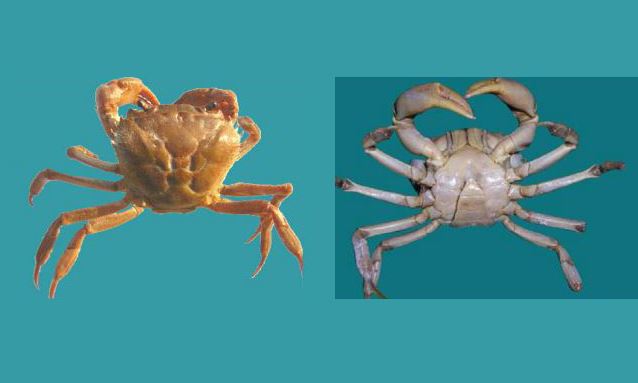(Right now the "Previous" and "Next" doesn't maintain serial. We're working to getting it fixed,)
Scientific Name: Labothelphusa wood-masoni (Rathbun, 1905)
Synonym: Potamon (Acanthotelphusa) woodmasoni Rathbun, 1905 (Currently unaccepted)
English Name: Freshwater Crab
Local/Bangla Name: masonii kakra(মেসোনি কাঁকড়া), Kata kakra( কাটা কাঁকড়া)

Photo: Rahman MA et all, 2008
Classification:
Kingdom: Animalia
Phylum: Arthropoda
Class: Malacostraca
Order: Decapoda
Family: Potamidae
Description:
The carapace of this species is hexagonal, broader than long, and convex, with an uneven dorsal surface. The frontal region is robust, and the anterior and anteo-lateral margins are minutely granular. There are many short oblique wrinkles on the posterolateral margins, and a distinct cervical groove is present. Obliquely placed carinae are found on the outer epibranchial, mesobranchial, and metabranchial regions. The orbits are broader, with a crenulated lower edge, and they are separated from the anterolateral sides of the carapace. An H-shaped gastric groove is observed on the dorsal surface of the carapace, and regulose epigastric crests extend well in advance of the sharp post-orbital crests. The eyes are moderate in size, and the outer margin of the eye has a U to V-shaped incision. The chelipeds are equal, slender, and shorter than the legs, with the carpus being rough at the upper edge. There is a sub-terminal spine on the upper border of the arm, and a strong spine is present at the inner angle of the carpus. The fingers are slender and longer than the palm. Pereiopods are long, thin, and laterally compressed, with the dactylus being long and styliform, featuring spinules. In terms of coloration, the dorsal surface of the carapace and cheliped ranges from brownish to grey, with deep brown spots. The dorsal side of the pereiopod is light brownish. The ventral surface of the cheliped, pereiopod, and carapace is lighter in adults but yellowish-light in young individuals.
Habitat & Distribution in Bangladesh:
Found on the bottom of a water body and abundant in shallow water bodies, such as paddy fields, beels, canals, etc. during summer. Construct burrow closer to water level in clay soil to escape from the dry season. The humid air trapped inside the burrows that give crabs enough moisture to survive until the wet weather returns. Scatteredly distributed all over Bangladesh, but commonly found in estuaries of Chakaria Sundarban areas.
Environment:
Freshwater
Main References:
Ahmed ATA, Kabir SMH, Ahmad M, Rahman AKA, Haque EU, Ahmed ZU, Begum ZNT, Hassan MA, Khondker M (2008) Encyclopedia of Flora and Fauna of Bangladesh, Vol. 18. Part II Arthropoda: Crustacea. Asiatic Society of Bangladesh, Dhaka 226 pp
Other References:
Shafi M, Quddus MMA, (1982) Bangladesher Matshya Sampad (Fisheries of Bangladesh), Bangla Academy of Dhaka, Dhaka


